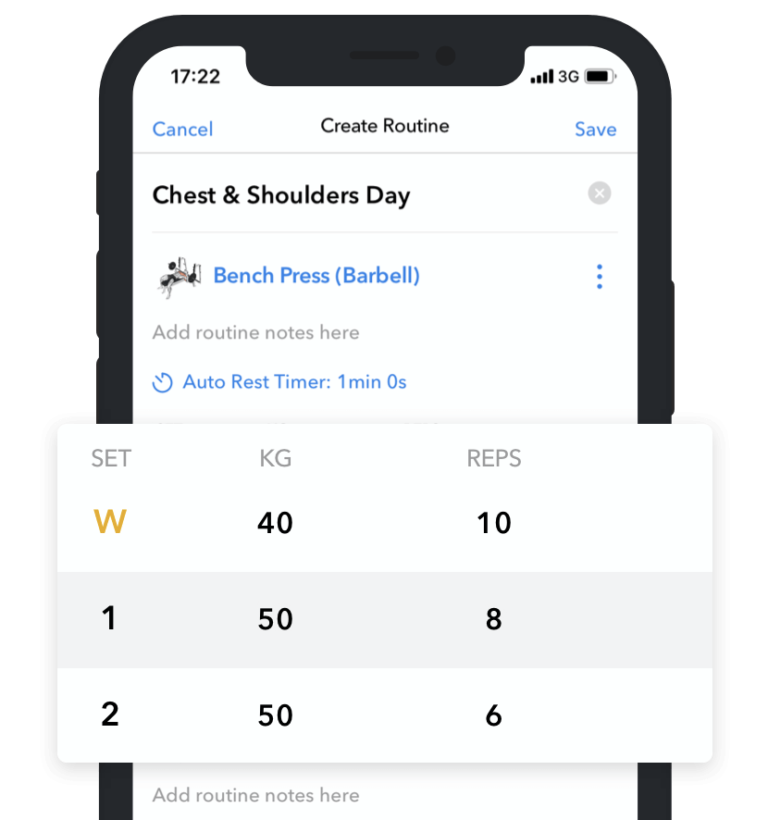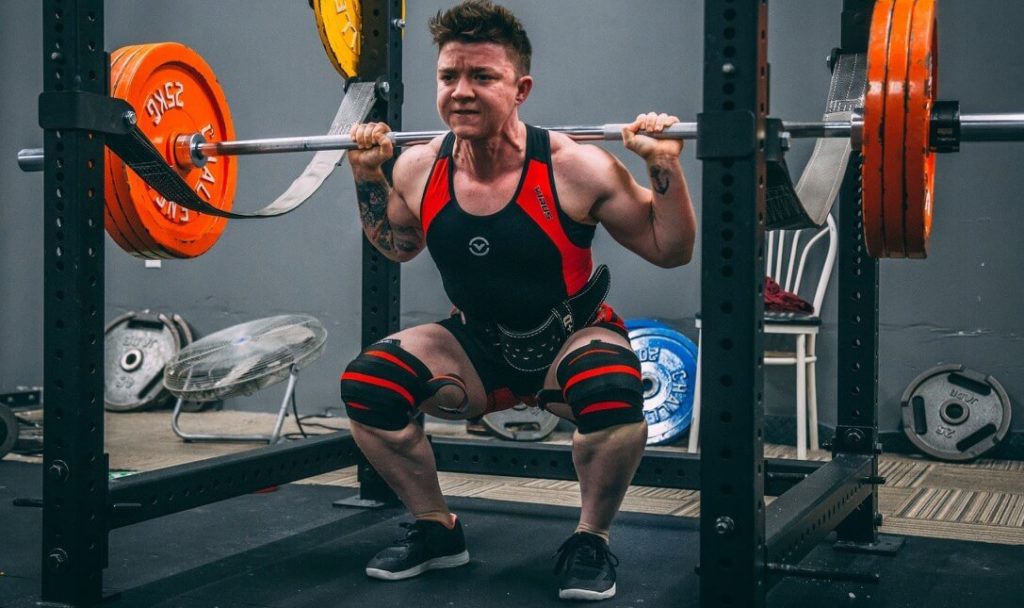One training system embraces the law of hard work better than any other. It is incredibly tough and humbling, but those brave and stubborn enough to stick with it are bound to see excellent results.
The approach is known as the 10 Sets Method, but given its German roots, many people know it as German Volume Training (GVT). So, what is volume training?
According to most sources on the internet, GVT originated in Germany in the 1970s, and the method was popularized by Rolf Feser, the national weightlifting coach at the time.
Vince Gironda, the man behind Gironda’s 8×8, popularized a similar system in the United States along with strength coach Charles Poliquin. Regardless of who came up with the training method first, it genuinely works and is still popular today.
The primary purpose of German Volume Training was to allow competitors to pack on muscle mass during the off-season. According to sources, the effective method allowed weightlifters to move up an entire weight class in record time.
Like other proven programs, GVT works incredibly well for hypertrophy because it exposes each muscle to repeated stress––10 sets per movement. Even experienced lifters can build large amounts of muscle due to the sheer difficulty of the 10 Sets Method.
Attempt German volume training with the help of the Hevy workout tracker.







Hevy – Workout Tracker
Create your own German volume training workout with Hevy, and track your progress – for free
The Benefits of the German Volume Training Program
The German volume training plan delivers three unique benefits:
- Builds muscle in record time
- Gets you strong
- It makes you tough and disciplined
Performing such large amounts of training volume shocks the muscles in new and profound ways, forcing them to adapt quickly. Doing movements like the bench press for ten straight sets leads to impressive hypertrophy.
Volume training is also helpful for getting strong even if you don’t focus on the load. The tremendous stress you place on your body leads to lots of metabolic stress and mechanical tension that promote strength development (1).


Doing many sets of compound movements is also an excellent practice that improves your skill with the various barbell lifts.
The third notable benefit of a German volume training routine is that it makes you tougher and better able to handle challenging workouts. Going through a block of GVT successfully will make almost any other program much easier to handle.
One idea suggests that GVT is helpful for cutting (fat loss). We recommend against that because of two things. First, volume training is designed for muscle growth and strength gain and works best when combined with a high-calorie diet (2, 3).
Second, cutting requires a calorie deficit, which impairs your recovery and makes it more challenging to complete high-volume workouts (4).
Does German Volume Training (GVT) work?
GVT is not a special workout approach and doesn’t work for everyone. For instance, less advanced trainees don’t need volume training to make good progress because they aren’t as used to the training stress.
Similarly, people with impaired recovery (e.g., not enough sleep, dieting for fat loss, too much life stress, etc.) would be better off with a more moderate training approach. Such individuals could do better with a more moderate approach, such as a 2 or 4-day upper/lower split.
In one study, researchers compared a modified German volume training approach to a traditional hypertrophy plan (5).
Half the participants did 10 sets of 10 reps, and the other half did 5 sets of 10 reps. After six weeks of training, the subjects that did less training experienced slightly more muscle and strength gains.
Still, one study isn’t enough to claim that GVT is ineffective because it can work for more advanced individuals with good recoverability. Adequate sleep and a high-calorie diet are crucial for making GVT effective.
Is German Volume Training good for Hypertrophy and Strength?
To understand German Volume Training better, we first have to look at what it takes to build muscle and strength.
Hypertrophy Development
- Adequate training volume – 10 to 20 weekly sets per muscle group (2)
- Varied intensity – doing sets with light, moderate, and heavy loads
- Optimal frequency – training each muscle group two to three times per week (6)
- Effort – pushing yourself close to failure (7)
- Exercise selection – doing at least a couple of movements per muscle group
- Intra-workout recovery – resting enough between sets to maintain your performance (8)
Strength Development
- Enough quality practice with heavier loads (75+ percent of 1RM)
- Performing the lifts you want to improve two to three times per week (9)
- Doing assistance exercises that support your performance on the main lifts
- Not training to failure most of the time and stopping before your technique begins to break down
- Resting enough between sets to do all the prescribed repetitions (e.g., 5 sets, 5 reps) (10)
The primary benefit of GVT is that you do plenty of sets on compound lifts to stimulate your muscles. Unfortunately, the approach comes with some drawbacks, such as:
- Limited exercise selection
- Rigid rep-range structure
- Inadequate rest between sets


GVT will allow you to build muscle and get stronger, but focusing on too few exercises and only doing sets of 10 reps can lead to boredom and possibly contribute to overuse injuries.
Further, resting too little between sets (90 seconds) can impair your performance and force you to grind repetitions to reach your goals on each set.
Volume with GVT
German Volume Training prescribes 10 sets of 10 reps on compound exercises, and each workout includes four movements paired in two supersets. You must train three times every five days, which gives you two days to recover.
High volume training is primarily suitable for developing muscle mass, but it can also work for strength gains.
The reason is that GVT features compound exercises, and doing ten sets gives you a lot of necessary practice to develop your lifting skills and improve neuromuscular efficiency. GVT is most beneficial for people eating a high-calorie diet and aiming to gain body weight.
Vince Gironda’s 8×8 plan is a high-volume approach for fat loss, but it emphasizes lighter weights and much shorter rest periods.
What is the tempo of the program?
Unlike most workout plans, GVT emphasizes tempo––the speed with which you perform individual repetitions. Tempo is split into four distinct portions:
- Lowering the weight
- Keeping the weight at the bottom
- Lifting the weight
- Pausing at the top
Most movements you do on German Volume Training follow a 4-0-2-0 tempo. You lower the weight for four seconds, don’t pause at the bottom, lift it for two seconds, and don’t pause at the top.
A tempo of 3-0-2-0 would work better for isolation movements like bicep curls and tricep extensions.
Maintaining a consistent tempo is necessary for stimulating your muscles effectively and working out with proper form. Regardless of how tired you become, ensuring a steady tempo will prevent you from using momentum.







Hevy – Workout Tracker
Create your own German volume training workout with Hevy, and track your progress – for free
Training Frequency
There are no specific recommendations for how often you should do German Volume Training. One option is to do a 30-day cycle and follow up with a 15-day phase that includes less training but puts greater emphasis on tempo.
The whole training block should last for four to seven weeks before you take a break and start over or do something else.
Due to its demanding nature, GVT might not be an excellent long-term training approach. You can use it for several weeks at a time, but year-round training can increase the risk of overtraining and getting injured.
German Volume Training is a modified 3-day split that pairs muscle groups similar to a bro split. The best way to use the method is by following the template and never skipping a recovery day.
Sample Workout: Beginner/Intermediate
Phase 1
Phase 1 refers to the first 30 days of the German Volume Training template. It includes six 5-day cycles, each consisting of three workouts. Working out for 30 days allows you to train all major muscle groups six times.
Since GVT operates in 5-day cycles instead of the traditional 7, your training schedule looks slightly different from week to week. Here is how the six cycles look:
| Cycle 1 | Cycle 2 | Cycle 3 | Cycle 4 | Cycle 5 | Cycle 6 | |
| Day 1 | Chest and back | Chest and back | Chest and back | Chest and back | Chest and back | Chest and back |
| Day 2 | Legs and abs | Legs and abs | Legs and abs | Legs and abs | Legs and abs | Legs and abs |
| Day 3 | Rest | Rest | Rest | Rest | Rest | Rest |
| Day 4 | Arms and shoulders | Arms and shoulders | Arms and shoulders | Arms and shoulders | Arms and shoulders | Arms and shoulders |
| Day 5 | Rest | Rest | Rest | Rest | Rest | Rest |
Day 1


Exercise: Chest and back
| Superset 1 | Superset 2 |
| Bench Press (Barbell) 10 sets of 10 reps at 60 percent of 1 RM (4-0-2-0) Bent Over Row (Barbell) 10 sets of 10 reps at 60 percent of 1 RM (4-0-2-0) | Cable Fly Crossover 3 sets of 10 reps (3-0-2-0) Lat Pulldown (Cable) 3 sets of 10 reps (3-0-2-0) |
90 seconds rest between supersets
Day 2
Exercise: Legs and abs
| Superset 1 | Superset 2 |
| Squat (Barbell) 10 sets of 10 reps at 60 percent of 1 RM (4-0-2-0) Lying Leg Curl (Machine) 10 sets of 10 reps at 60 percent of 1 RM (3-0-2-0) | Seated Calf Raise 3 sets of 10 reps (3-0-2-0) Hanging Leg Raise 3 sets of 10 reps (3-0-2-0) |
90 seconds rest between supersets
Day 4
Exercise: Arms and shoulders
| Superset 1 | Superset 2 |
| Bench Press – Close Grip (Barbell) 10 sets of 10 reps at 60 percent of 1 RM (4-0-2-0) Bicep Curl (Barbell) 10 sets of 10 reps at 60 percent of 1 RM (3-0-2-0) | Lateral Raise (Dumbbell) 3 sets of 10 reps (3-0-2-0) Reverse Fly (Dumbbell) 3 sets of 10 reps (3-0-2-0) |
90 seconds rest between supersets
Phase 2
Phase 2 is an extension of phase 1 and is similar in many ways. One difference is that you’re doing sets of six instead of ten reps. Tempo is also crucial to keep in mind because using a heavier load can increase the risk of technique breakdown.
As mentioned above, phase 2 is only 15 days long and follows the same schedule of doing three workouts in a 5-day block.
Day 1


Exercise: Chest and back
| Superset 1 | Superset 2 |
| Incline Bench Press (Dumbbell) 10 sets of 6 reps (5-0-1-0) Wide Pull Up 10 sets of 6 reps (5-0-1-0) | Chest Fly (Dumbbell) 3 sets of 6 reps (3-0-1-0) Bent Over Row (Barbell) 3 sets of 6 reps (3-0-1-0) |
90 seconds rest between supersets
Day 2
Exercise: Legs and abs
| Superset 1 | Superset 2 |
| Deadlift (Barbell) 10 sets of 6 reps (5-0-2-0) Seated Leg Curl (Machine) 10 sets of 6 reps (5-0-1-0) | Oblique Crunch 3 sets of 12 to 15 reps (3-0-3-0) Standing Calf Raise (Machine) 3 sets of 12 to 15 reps (3-0-3-0) |
60 seconds rest between supersets
Day 4
Exercise: Arms and shoulders
| Superset 1 | Superset 2 |
| Bench Press – Close Grip (Barbell) 10 sets of 6 reps (4-0-2-0) Seated Incline Curl (Dumbbell) 10 sets of 6 reps (4-0-2-0) | Lateral Raise (Dumbbell) 3 sets of 12 to 15 reps (2-0-2-0) Reverse Curl (Barbell) 3 sets of 12 to 15 reps (3-0-2-0) |
60 seconds rest between supersets
Schedule (Week 1)
Monday – Chest and back
Tuesday – Legs and abs
Wednesday – Off
Thursday – Arms and shoulders
Friday – Off
Saturday – Chest and back
Sunday – Legs and abs
Supersets in German Volume Training
A superset is a training approach where you do two exercises back-to-back with little to no rest in-between exercises.
The best way to approach supersets is by pairing exercises that train agonist-antagonist muscle groups: chest and back, biceps and triceps, quadriceps and hamstrings, etc.
You can also pair unrelated muscles like the chest with calves and biceps with hamstrings. Supersets wouldn’t work well in some cases, such as when doing a barbell back workout, because all movements in the workout target one area.


As you saw from the previous paragraphs, German Volume Training is based on super-setting exercises. Each workout consists of four activities paired into two supersets. Doing so is necessary to condense more work in less time and finish the session more quickly.
Creating and tracking your supersets is made simple with the Hevy app.







Hevy – Workout Tracker
Create your own German volume training workout with Hevy, and track your progress – for free
Does German Volume Training Assist with Fat Loss?
GVT might seem like an excellent fat loss training plan due to the large amount of volume you’re doing. More exercises and sets would allow trainees to burn extra calories and create the necessary deficit for fat loss (4).
Unfortunately, German Volume Training isn’t suited for fat loss because doing that many sets can lead to recovery issues and excessive muscle breakdown.
A more moderate approach such as a 3 or 4-day training split could be much more effective in helping you retain lean tissue and burn primarily fat.
German Volume Training Vs. Madcow 5×5
The Madcow 5×5 is an intermediate-level training program for muscle growth and strength gain. You must train three days per week and use a barbell for most exercises.
Madcow was a member of the EliteFitness forum and designed the unique 5×5 approach by changing elements of Bill Starr’s original training plan.
One notable change was the addition of more accessory exercises designed to help trainees build muscle mass.
Similar to other 5×5 methods, Madcow’s version retained its core of using progressively heavier weights to create overload and develop strength in the primary lifts: bench press, squat, deadlift, overhead press, and barbell row.
Like GVT, Madcow 5×5 is an effective training method many fitness enthusiasts use. It is based on sound training principles and is considered one of the best intermediate powerlifting programs.
A notable difference is that Madcow is better suited for long-term training, whereas GVT would work better for short-term results. Madcow features systematic increases in the weights used, the training frequency allows for good recovery, and individual sessions aren’t as demanding.
In contrast, GVT pushes you to your limits and shocks your entire body, promoting quick adaptations, but the approach isn’t as sustainable.
Final Thoughts
Most sources suggest that the 10 Sets Method originated in Germany and was popularized by Rolf Feser in the 1970s.
Charles Poliquin and Vince Gironda taught a similar method in the United States during the 70s and 80s.
Since then, volume training has grown in popularity among gym enthusiasts and is often used to build muscle mass in record time.
The training approach is relatively simple: do three workouts every five days, complete one or two phases, and move on to something else or start over.
Despite the simplicity, GVT is challenging due to the high training volume and the many supersets you must do.
Those brave and stubborn enough to do GVT will reap impressive benefits in the form of muscle mass, strength gain, and mental resilience.




